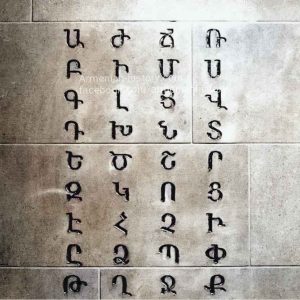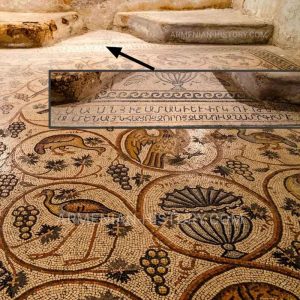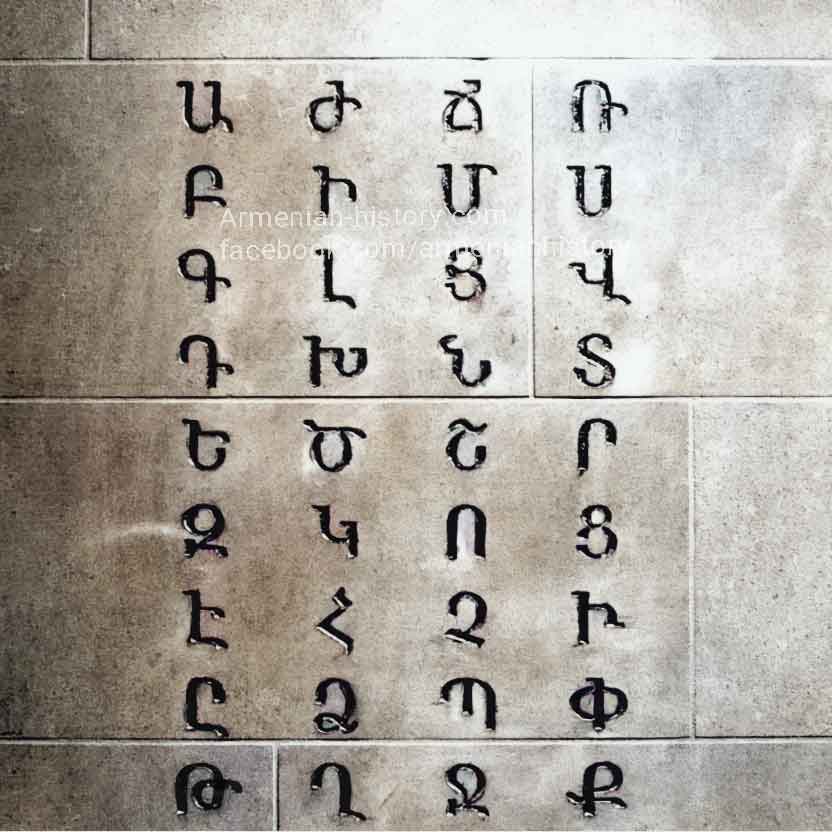The Armenian alphabet is not just a writing system—it is a powerful symbol of cultural identity, intellectual resilience, and national unity. Developed in the early 5th century by Saint Mesrop Mashtots, this unique alphabet has played a pivotal role in preserving the Armenian language, literature, and heritage through centuries of upheaval and diaspora. This landing page offers a comprehensive and scholarly overview of the Armenian alphabet, from its historical creation to its continued cultural and educational significance.
Origins of the Armenian Alphabet
The Armenian alphabet was created in 405 AD by the monk, scholar, and linguist Mesrop Mashtots, with the support of King Vramshapuh and Catholicos Sahak Partev. Prior to its invention, Armenians used Greek, Syriac, or Persian scripts inconsistently, which posed major challenges for the standardization of religious and literary texts.
Mashtots’ goal was both linguistic and spiritual: he sought to give the Armenian people a script in their own language to strengthen the spread of Christianity, which had become the state religion in Armenia in 301 AD. The creation of the alphabet was a foundational moment that enabled the translation of the Bible into Armenian, often called the “Queen of Translations” for its elegance and fidelity.

Structure and Characteristics
The original Armenian alphabet consisted of 36 letters, with three more added in later centuries. It is written from left to right, like most Indo-European languages, and was specifically crafted to match the phonological system of Classical Armenian (Grabar).
Key Features:
- Phonetic precision: Each character corresponds to a specific sound.
- Visual harmony: The script has a beautiful balance and symmetry, making it highly legible and aesthetically elegant.
- Mathematical value: Letters were assigned numeric values, similar to Greek and Hebrew systems.
The alphabet reflects a combination of Greek, Syriac, and native Armenian influences, yet it is wholly unique in its structure and design.

Evolution of the Armenian Script
Classical Armenian (Grabar)
The original form of the alphabet was designed to represent the phonemes of Grabar, the classical literary and liturgical language of Armenia. Used until the 18th century, Grabar remains the liturgical language of the Armenian Apostolic Church today.
Medieval and Modern Adjustments
During the Middle Ages, scribes introduced stylistic variants such as bolorgir (cursive script) and notrgir (minuscule script) for faster writing. In the 12th century, three letters were added to accommodate foreign sounds: Օ (O), Ֆ (F), and և (yev).
In the 19th and 20th centuries, the alphabet was adapted for Eastern and Western Armenian dialects, which differ slightly in pronunciation and orthography.
Cultural and Religious Impact
The Armenian alphabet was not just a tool for literacy—it became a sacred national symbol. Its creation marked the beginning of the Golden Age of Armenian literature, during which historians like Agathangelos, Pavstos Buzand, and Movses Khorenatsi recorded Armenia’s early history, legends, and the conversion to Christianity.
Manuscript production flourished in monastic centers such as Sanahin, Haghpat, and Etchmiadzin, where scribes produced illuminated gospels, bibles, and theological texts.
Art and Aesthetics: The Armenian Alphabet as Visual Culture
The Armenian script is not only functional—it is deeply artistic. From the Middle Ages onward, letters were elaborately stylized in illuminated manuscripts. The first letter of texts was often decorated with floral, zoomorphic, or geometric designs, symbolizing divine beauty and intellectual grace.
In modern Armenia and the diaspora, the alphabet is celebrated in:
- Calligraphy and typography
- Stone carvings (khachkars)
- Public monuments
- Jewelry and textiles
A notable example is the Alphabet Monument in Artashavan, Armenia—a modern tribute featuring massive stone carvings of each letter, honoring Mesrop Mashtots’ creation.

Educational Role and Literacy
The invention of the alphabet led to one of the earliest and most widespread literacy movements in world history. Education became a national priority, with schools founded alongside churches and monasteries.
Even today, Armenian language and alphabet education remains central in Armenia and among the diaspora. Children are taught the alphabet in early grades, and special days commemorate its creator. The Day of the Armenian Alphabet and Literature, celebrated annually in October, reflects the deep reverence for Mashtots’ gift.
Armenian Alphabet in the Diaspora
After the Armenian Genocide of 1915 and subsequent waves of emigration, the Armenian alphabet became a lifeline for cultural survival. Schools, churches, and cultural associations preserved the script across continents.
In diaspora communities, especially in the U.S., France, Lebanon, and Russia:
- Armenian-language newspapers and books are printed regularly.
- Bilingual schools and Saturday programs ensure generational transmission.
- Online tools and language apps help younger Armenians learn to read and write.
Unicode and Digital Preservation
In the 1990s, the Armenian script was officially included in the Unicode Standard, making it accessible for modern computing and global digital communication. This integration allowed for:
- Web and mobile content in Armenian
- Digital libraries and archives
- Social media in Armenian script
Open-source fonts like Sylfaen and Noto Armenian support the alphabet across platforms. Diaspora tech initiatives, such as Armenian keyboard apps and online dictionaries, help reinforce its use among younger generations.
Symbolism and National Identity
The Armenian alphabet is an enduring emblem of national consciousness. It appears in the national coat of arms, currency, and many monuments. Mesrop Mashtots himself was canonized as a saint and is revered as both a linguistic genius and a spiritual father.
In times of foreign domination and exile, the script served as a powerful reminder of independence, unity, and continuity. Wherever Armenians went, the alphabet followed—and flourished.
Mesrop Mashtots: The Visionary Behind the Script
Mashtots was not merely an inventor; he was a revolutionary educator, theologian, and cultural strategist. Trained in Greek and Syriac, he served as a court secretary before entering monastic life. Inspired by a vision, he created the alphabet to anchor the Armenian people spiritually and intellectually.
His legacy includes not just the alphabet but the foundation of the first Armenian schools, translation of the Bible, and establishment of an enduring educational ethos. His tomb in Oshakan is a national pilgrimage site.
A Legacy Beyond Letters
The Armenian alphabet is more than a script—it is a living monument to the resilience, creativity, and spiritual depth of the Armenian people. From medieval parchment to smartphone screens, its 39 letters continue to carry the collective memory, aspirations, and voice of a nation.
Whether you are a student, historian, educator, or simply curious, understanding the Armenian alphabet is a gateway into one of the world’s oldest and most inspiring cultural journeys.




